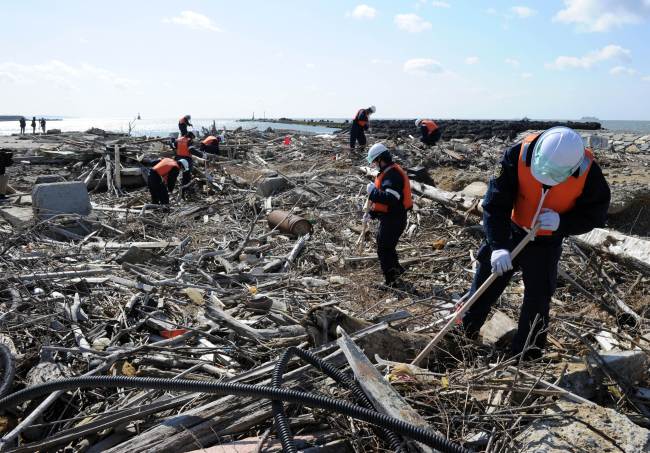[Newsmaker] After Fukushima, Japan struggles to rebuild
By Korea HeraldPublished : March 11, 2013 - 20:19
The scene is a memory that will be etched into the minds of people worldwide for a generation. But for those who were there, it will take a generation more to recover.
The world watched the catastrophe unfold as a 9.0-magnitude earthquake sent tsunamis up to 45 meters high toward Japan on March 11, 2011, drowning coastal towns and crippling the Fukushima Dai-ichi nuclear power plant in the worst nuclear disaster since Chernobyl.
The world watched the catastrophe unfold as a 9.0-magnitude earthquake sent tsunamis up to 45 meters high toward Japan on March 11, 2011, drowning coastal towns and crippling the Fukushima Dai-ichi nuclear power plant in the worst nuclear disaster since Chernobyl.

The natural disaster left some 16,000 dead, 2,700 missing and 315,000 without permanent homes. Many are still cramped in temporary housing. The small towns within 12 miles of the crippled Fukushima reactors make up a no-man’s land where workers, two years later, labor to clean up radiation and debris.
Yakuza gangs have infiltrated the sub-contractors of the clean-up projects, creaming off large chunks of the workers’ higher-than-average wages. Other laborers, dressed in normal work clothes and surgical masks, are reportedly not even advised about their dangerous working conditions.
Pipes, gas cans, batteries and other toxic debris still litter Miyagi and Iwate prefectures. Every day, 400 cubic meters of groundwater floods into the Fukushima plant’s damaged reactors, further impeding the cleanup, which is already expected to take 30 to 40 years.
Farms and fisheries nearby have been devastated ― either by radioactive contamination or the fear of it ― and many young people are leaving the region to start anew, further sapping the region’s economy.
On top of initial damages estimated at $14.5 billion to $34.6 billion, growth in Japan remains stagnant ― 0.2 percent annualized in the fourth quarter last year.
Power shortages are part of the problem. Japan’s 50 nuclear plants were shut down soon after the March 2011 catastrophe amid public fear of further disasters. Only two have since been reactivated. About 70 percent of Japanese people want to do away with atomic energy, but commercially viable alternatives may take several decades to introduce.
Then-Prime Minister Yoshihiko Noda declared during his term that Japan would phase out nuclear power by the 2030s, but with the recent election of pro-nuclear Prime Minister Shinzo Abe, the people may not get their way. Tens of thousands of protesters rallied in Tokyo and other regions on Sunday, even as a plant at the northwestern tip of Aomori prefecture is being constructed and will soon become operable.
The key balance for Japan has become one between the economy and national unity. Whether Abe can be persuaded by the public will be the deciding factor.
By Elaine Ramirez (elaine@heraldcorp.com)
-
Articles by Korea Herald












![[Today’s K-pop] BTS pop-up event to come to Seoul](http://res.heraldm.com/phpwas/restmb_idxmake.php?idx=644&simg=/content/image/2024/04/17/20240417050734_0.jpg&u=)





![[KH Explains] Hyundai's full hybrid edge to pay off amid slow transition to pure EVs](http://res.heraldm.com/phpwas/restmb_idxmake.php?idx=652&simg=/content/image/2024/04/18/20240418050645_0.jpg&u=20240419100350)

![[Today’s K-pop] Zico drops snippet of collaboration with Jennie](http://res.heraldm.com/phpwas/restmb_idxmake.php?idx=642&simg=/content/image/2024/04/18/20240418050702_0.jpg&u=)